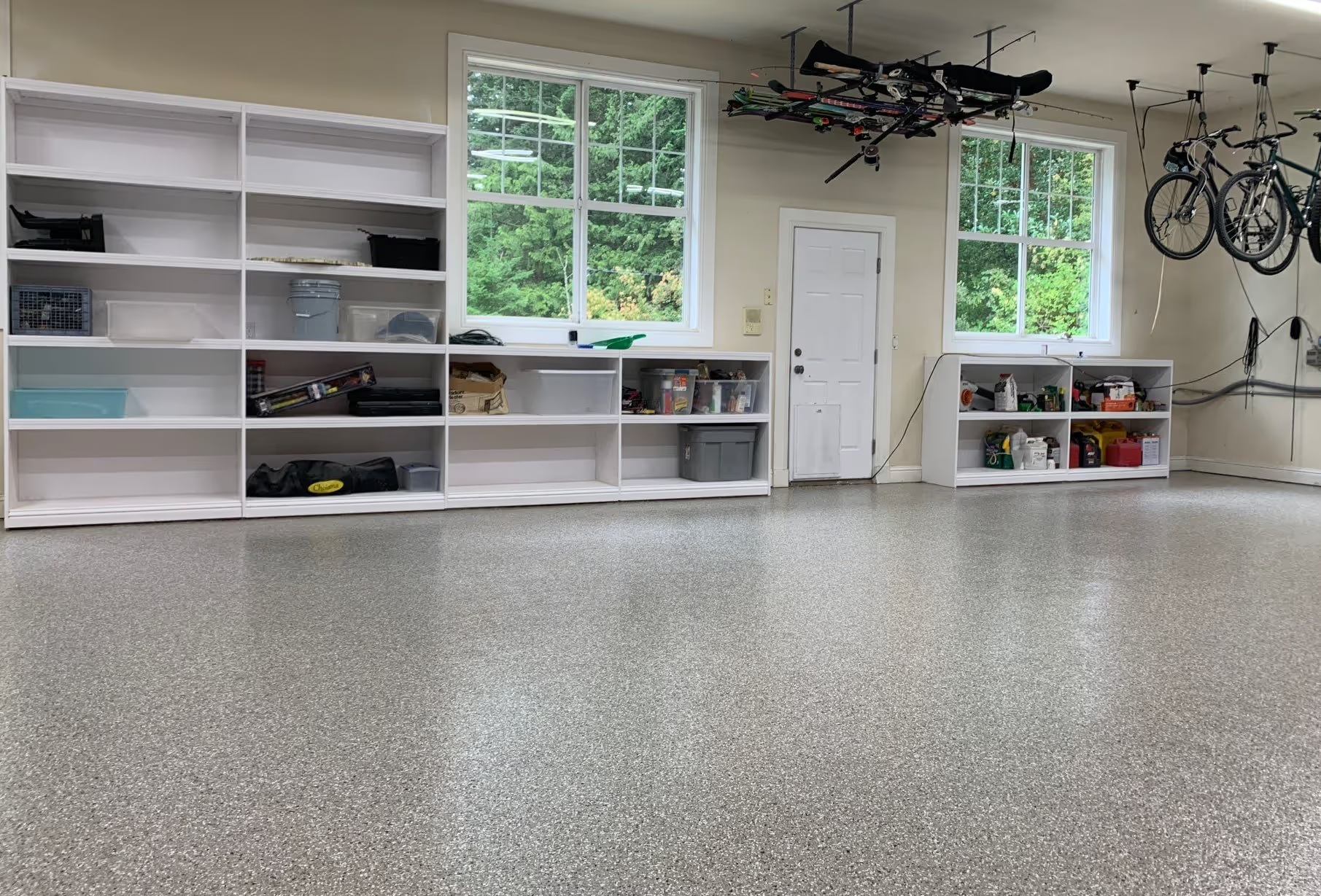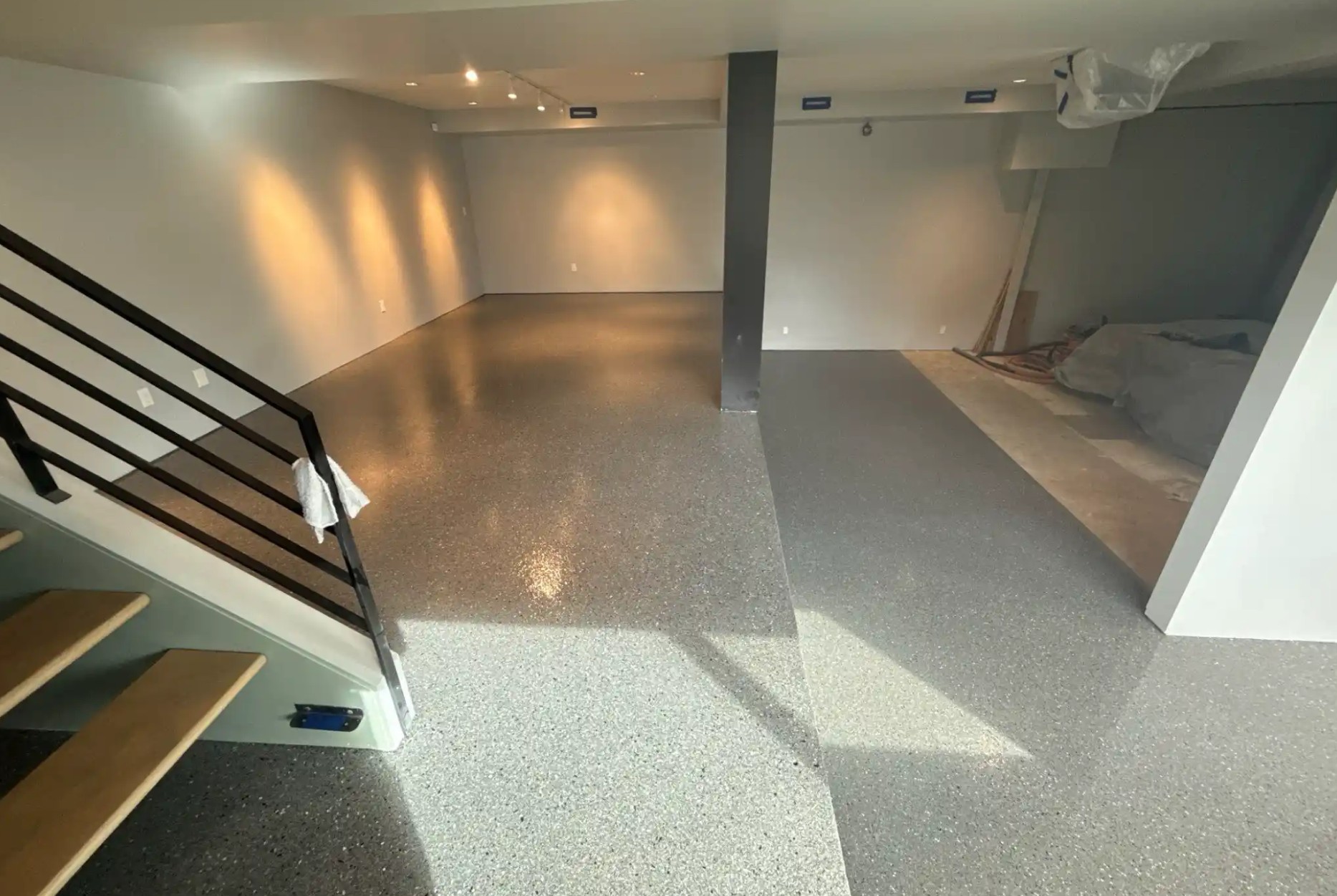
You're researching garage floor coatings, and inevitably, you've encountered a range of prices that seems confusing—even contradictory. Some companies quote $3 per square foot. Others quote $8 or more. Penntek systems often fall on the higher end of the spectrum. And now you're wondering: Is the price difference justified, or is this just clever marketing?
Here's the uncomfortable truth that most coating companies won't tell you upfront: Focusing solely on initial purchase price is the most expensive mistake you can make when choosing a garage floor coating.
The real question isn't "Which coating costs less to install?" It's "Which coating delivers the lowest lifetime cost of ownership while actually performing as promised?" Understanding this distinction can save you thousands of dollars and years of frustration.
Let's break down the complete cost picture—from installation through decades of ownership—so you can make an informed decision based on value rather than just price.
When collecting quotes for garage floor coatings, you'll generally encounter pricing within these ranges:
DIY Epoxy Kits (Big-box stores):
Professional Epoxy Installation:
Mid-Grade Polyaspartic/"One-Day Floor" Companies:
Penntek Pure Polyurea Systems:
Looking at these numbers in isolation, Penntek appears 50-100% more expensive than cheap epoxy. But this comparison is like judging car value by comparing a Toyota Corolla to a luxury vehicle while ignoring reliability, maintenance costs, and lifespan.
The question isn't whether Penntek costs more initially—it does. The question is whether that higher initial investment delivers superior value over the floor's lifetime.
Before comparing lifetime costs, it's essential to understand why Penntek systems command premium pricing. The difference isn't arbitrary markup—it's the cumulative cost of superior materials, processes, and expertise.
Pure Polyurea Formulation:
Penntek's base coat features pure polyurea with over 99% solids content. This isn't a minor specification detail—it's fundamental chemistry that determines performance.
Many coating companies use "stretched" polyurea—adding fillers and extenders that reduce material costs but dramatically compromise longevity. It's profitable for contractors but disappointing for homeowners who discover deterioration in years 2-4.
Pure polyurea costs significantly more to manufacture because:
FadeLock Technology:
Penntek's topcoat incorporates proprietary UV blockers that prevent yellowing and color degradation. This technology costs more to develop and produce than standard polyaspartic formulations, but it's why Penntek floors look vibrant in year 20 while epoxy has yellowed and faded by year 3.
100% Non-Porous Topcoat:
The antibacterial, antimicrobial finish that makes Penntek floors effortlessly easy to clean requires advanced engineering. Standard epoxy and mid-grade poly systems remain porous, absorbing stains and becoming progressively harder to clean.
Commercial-Grade Grinding Equipment:
Penntek Certified Dealers invest in professional floor grinders weighing over 600 pounds with high-quality diamond tooling. These machines cost $10,000-30,000+ and require ongoing maintenance.
Cheap epoxy installers often use consumer-grade equipment or skip proper grinding entirely—a primary reason for premature failure.
Specialized Repair Systems:
Penntek Mender HD rapid-cure polyurea repair system costs significantly more than hardware store crack fillers, but it creates permanent repairs that accept coating systems without delamination.
Rigorous Certification Program:
Penntek dealers undergo extensive training at company headquarters led by technical teams with AMPP Coatings Inspector Certification. This training covers:
This investment in expertise ensures consistent excellence across every installation—something cheap epoxy companies cannot replicate.
Unlike installer-only warranties that become worthless if the company goes out of business, Penntek's limited lifetime warranty is backed directly by the chemical manufacturer. This protection has real value and represents confidence in product longevity.
Now let's examine what actually happens to that attractive low-cost epoxy floor over time. This is where the lifetime cost calculation becomes painfully clear.
Years 1-2: Floor looks acceptable, though porous surface may already be absorbing stains. UV exposure begins yellowing process. Homeowners generally satisfied.
Years 2-4: Visible deterioration accelerates. Yellowing becomes obvious. Hot tire marks appear. Cracks develop along original concrete imperfections that weren't properly repaired. Surface becomes increasingly difficult to clean as porosity worsens.
Years 3-5: Coating failure. Widespread delamination, peeling, and cracking. Floor becomes unsightly. Homeowner realizes replacement is necessary.
Result: Empty garage again, pay for coating removal and reinstallation. The total cost of two installations within 8-10 years significantly exceeds the cost of a single Penntek installation that's still performing flawlessly.
Beyond replacement costs, epoxy ownership carries ongoing expenses that aren't visible in initial quotes:
Time Investment: Hours spent scrubbing stains that won't come out of porous surfaces. Constant battle against yellowing and deterioration.
Cleaning Products: Specialized degreasers and stain removers purchased in frustrating attempts to maintain appearance.
Garage Disruption: Multiple instances of emptying your entire garage for replacements—an exhausting, time-consuming process.
Property Value Impact: Deteriorated garage floors create poor impressions for potential home buyers, potentially affecting sale price.
Stress and Frustration: The psychological cost of watching your investment fail prematurely while knowing you'll face the entire process again.
Let's calculate what you actually spend over three decades—a realistic timeframe for garage floor considerations since quality installations should last your entire home ownership.
Initial Installation (Year 0):
Second Installation (Year 4):
Third Installation (Year 9):
Fourth Installation (Year 15):
Fifth Installation (Year 21):
Sixth Installation (Year 27):
30-Year Total Cost: $14,500Number of times emptying garage: 6Accumulated frustration: Immeasurable
Initial Installation (Year 0):
Years 1-30:
30-Year Total Cost: $4,000Number of times emptying garage: 1Peace of mind: Priceless
Net Savings with Penntek: $10,500 over 30 years
This calculation assumes the cheapest possible epoxy installations. In reality, many homeowners pay more for each subsequent installation as they seek better quality, pushing the lifetime cost even higher.
When you receive a free consultation and quote for Penntek installation, several factors influence the final price:
Larger spaces benefit from economies of scale, with per-square-foot costs typically decreasing as project size increases. Smaller areas (under 300 sq ft) generally see higher per-square-foot pricing.
Minor damage: Standard pricing applies when concrete requires routine crack repair and surface preparation
Significant damage: Extensive spalling, deep cracks, or multiple repairs increase preparation time and materials, adding $500-1,500+ depending on severity
Moisture issues: Specialized primers or moisture mitigation systems add cost but ensure coating longevity
Solid colors: Typically the most cost-effective option
Decorative flake blends: Standard flake applications included in base pricing, but premium or custom blends may increase costs modestly
Custom logos or patterns: Intricate designs requiring additional labor and materials increase project investment
Multiple color zones: Different colors in different garage areas add complexity and cost
Easy access to the garage, straightforward layouts, and standard rectangular spaces typically don't affect pricing. Challenging access, unusual shapes, or multiple elevation changes may require additional time and expertise.
Faced with professional installation quotes, many homeowners consider DIY application to save money. This almost universally proves to be an expensive mistake.
Equipment Costs:
Material Costs:
Time Investment:
The Cost of Failure:
DIY Reality: You'll spend $400-975 in direct costs, invest 30-50 hours of labor, and face a 60-80% probability of failure requiring complete professional reinstallation. The "savings" disappears while the frustration multiplies.
Understanding pricing requires examining what your investment actually delivers:
Immediate Benefits:
Long-Term Performance:
Financial Protection:
Peace of Mind:
Between cheap epoxy and Penntek systems, you'll find mid-grade polyaspartic options marketed as premium alternatives to epoxy at more accessible pricing. These deserve special attention because they can be particularly misleading.
Marketing vs. Reality:
These companies position themselves as "better than epoxy" while undercutting Penntek pricing. The gap is bridged by:
Typical Outcome: Performance that falls between epoxy and Penntek—lasting 7-12 years rather than 3-5 or 30-40. While superior to cheap epoxy, you still face premature replacement, just slightly delayed.
The Math: If you pay $6/sq ft for mid-grade poly that lasts 10 years, you'll pay $4,800 over 30 years for three installations (less removal costs than epoxy but still requiring multiple reinstallations). You save minimally versus Penntek while enduring significantly more disruption.
The Bottom Line: Mid-tier solutions offer false compromise—not cheap enough to justify limited lifespan, not good enough to eliminate replacement cycles.
Armed with complete cost information, your decision framework becomes clearer:
Choose cheap epoxy if:
Choose mid-grade polyaspartic if:
Choose Penntek if:
When comparing pricing from different contractors, these questions reveal whether you're comparing equivalent offerings:
Evasive or vague answers indicate problems. Professional contractors provide confident, detailed responses because they deliver proven systems.
Understanding average pricing is helpful, but your specific project requires personalized evaluation. Schedule a free consultation with a Penntek Certified Dealer to receive:
The consultation process itself demonstrates the difference between commodity epoxy installers and certified Penntek professionals. You'll understand exactly what you're investing in and why it delivers superior value.
Yes, Penntek costs more initially than cheap epoxy. But that higher upfront investment delivers:
The real cost isn't measured in the initial check you write—it's measured in decades of ownership, including every replacement, every hour of frustration, and every disruption to your life.
Explore design options and discover what's possible when you choose quality over cheap initial pricing. Your garage transformation begins with understanding that the lowest price rarely delivers the best value.
Key Takeaways:
Ready to invest in a floor that lasts a lifetime? Contact us today for your free consultation and discover exactly what it costs to get the concrete coating everyone wishes they had—and why it's worth every penny.





